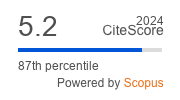Article | Open Access
Regional Organizations and Responsibility to Protect: Normative Reframing or Normative Change?
| Views: | 6104 | | | Downloads: | 5103 |
Abstract: The adoption of the principle of the Responsibility to Protect (RtoP) by all United Nations General Assembly (UNGA) member states in 2005, and its reaffirmation in dozens of United Nations Security Council (UNSC) resolutions, indicate that there is a growing consensus around the world that egregious human rights violations necessitate a cooperative and decisive international response. But just as the political debates raged surrounding the precise articulation of RtoP between 2001 and 2005, so too goes the contemporary debate surrounding the implementation of RtoP. Regional divergences in RtoP implementation, in particular, have been noted by many scholars, as regional organizations implement those elements of RtoP that best suit their policy goals. This paper will apply recent scholarship on norm-lifecycles, specifically on “norm localization” to the operationalization of RtoP by regional organizations. We seek to explore regional divergences on RtoP implementation between the European Union (EU), League of Arab States (LAS), and the African Union (AU) on Libya and Syria. From this assessment, three main arguments will be put forward: (1) regional organizations remain politicized, reframing RtoP in divergent ways that dilute the strength of the norm, (2) politicization of the RtoP discourse constrains regional norm localization processes, (3) politicization and reframing of RtoP inhibit regional normative change and limit the potential for timely and decisive responses to protect civilians.
Keywords: African Union; European Union; League of Arab States; norms; regional organizations; Responsibility to Protect
Published:
© Carla Barqueiro, Kate Seaman, Katherine Teresa Towey. This is an open access article distributed under the terms of the Creative Commons Attribution 4.0 license (http://creativecommons.org/licenses/by/4.0), which permits any use, distribution, and reproduction of the work without further permission provided the original author(s) and source are credited.


